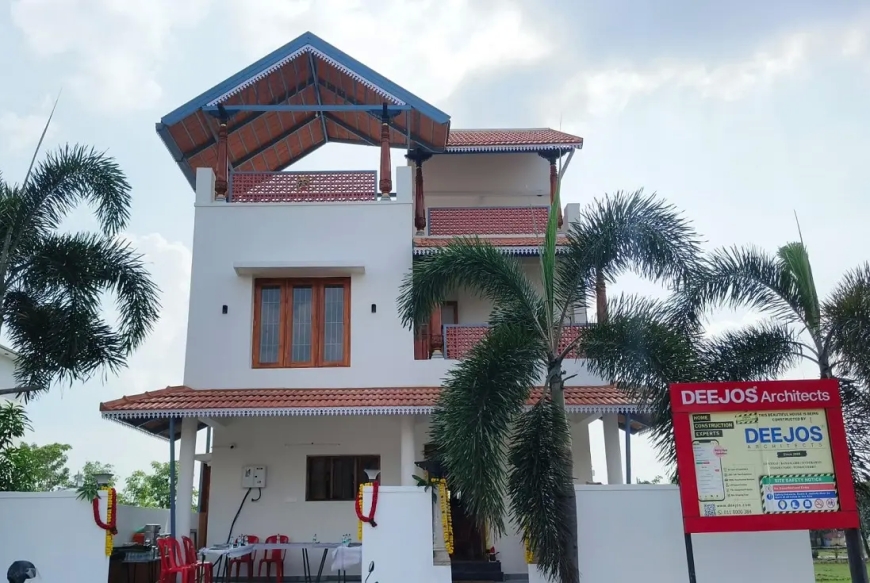What buyers want in today's residential developments
The growing demand of today’s homebuyers is fundamentally altering the shape of the Indian residential industry.

The Indian urban landscape is witnessing a profound change. Driven by rapid growth and the changing preferences of homeowners, this change is transforming the concept of ‘home’ for the urban people. The current generation of Indian buyers is becoming more discerning, seeking homes that provide not only living space but also a property that seamlessly blends into their lifestyles, features the latest technology, focuses on environmental sustainability, and promotes an enduring sense of belonging. The growing demand of today’s homebuyers is fundamentally altering the shape of the Indian residential industry.
Factors driving the shift
A blend of important technological, socio-economic, and demographic factors is changing the way cities are designed and built. By 2035, it's believed that India's urban population will reach 675 million, which will lead to the demand for better housing solutions. In the past, housing within Indian cities was influenced by regional plans that considered the climate of the region as well as socio-economic structures. This ranged from the overcrowded chawls of Mumbai, which housed large sections of the working class, to the sprawling and expansive havelis in Delhi, reflecting family and social hierarchies. As cities expand and populations grow, the emergence of high-rise apartments and new housing projects is on the rise. This shift shows the evolving needs and aspirations of urban dwellers in India.
Evolving demographics and family structures
One notable demographic shift is the increase in nuclear families, accompanied by a trend toward larger average household sizes. Statistics from the National Family Health Survey (NFHS-5) show that the average family size in India is 4.4 members, which is a significant decline from the previous decade, especially in urban regions. As a result, there is a growing need for smaller and more flexible living spaces that cater to the requirements of smaller families. Moreover, technology has transformed our lives. A recent study conducted by the India Brand Equity Foundation examines the growing demand for smart homes in India and predicts that it will rise to $6 billion by 2028. Most buyers living in big cities are looking for smart features such as controlled lighting, security, and climate control for greater safety and comfort.
In addition, growing environmental awareness is increasing the demand for green homes. It has been reported that the demand for sustainable homes has increased significantly. The India Green Building Council has seen a dramatic rise in registered green building projects, covering more than 7.8 million square meters of land across the country. The increasing popularity of remote and hybrid work environments due to the COVID-19 virus has led to a higher demand for homes that have flexible workspaces and floor plans. The epidemic has revealed the importance of health and health, and has led buyers to seek out homes that have amenities that support the quality of air and accessibility to green spaces.
The changing demands of urban residents
Urban residents' needs are changing, prompting buyers to seek out features that enhance accessibility, as well as comfort and satisfaction. The purchasing process for homes is evolving, with a focus on adaptable design, eco-friendly and community spirit as well as the importance of fitness and health is becoming an essential factor for buyers. In a range of Indian cities there is an increasing need for homes that reflect these ideals. Buyers are searching for properties with adaptable layouts that can seamlessly accommodate their shifting requirements—be it creating a home office, entertaining visitors, or adjusting to the changing dynamics of family life. Additionally, the increasing number of young, mobile professionals is fueling the demand for flexible rental agreements and the option to rent or purchase based on their current circumstances, especially in the premium real estate sector.
The allure of eco-friendly and sustainable homes
Indian homebuyers have started to highly prioritize eco-conscious and sustainable features. More than 60% of potential buyers are ready to pay a premium for homes that emphasize sustainability. This growing awareness of environmental issues is reflected in the rising interest in amenities such as solar panels, efficient rainwater harvesting systems, and the incorporation of green building materials. Furthermore, homes with access to green spaces, community gardens, and proximity to parks are becoming more sought after, especially in densely populated urban areas where access to nature is not easy. In cities like Pune and Bengaluru, known for their environmentally conscious residents, such amenities are in high demand.
The importance of connectivity and community
The longing for connection and a sense of belonging is a major trend influencing urban living. The prolonged period of social isolation brought about by the pandemic has highlighted the significance of a sense of belonging, leading to an increased interest in housing developments that incorporate shared facilities such as co-working spaces and communal areas, alongside rooftop gardens. Developers are increasingly focusing on creating integrated communities that encourage social interaction and give residents the opportunity to connect and engage.
Home automation technologies: An essential shift
Home automation technologies are evolving from a luxury to a fundamental requirement for homebuyers in India. As the world becomes increasingly interconnected, future property buyers view smart functionality as a valuable addition to any real estate. These innovations not only help with daily tasks, but they also make a home more secure and reduce energy consumption. Market analysts have reported that the Indian smart home industry is expected to grow tremendously and hit $11.7 billion by the year 2025, which indicates increasing demand.
The trend towards urban regions within India represents a clear indication of the changing motivations and expectations of homebuyers. Sustainability, flexibility, community, technology, and health are no longer just choices; they have become fundamental elements of the design of homes. These trends are bringing about the creation of homes that have customized configurations, built-in technology, as well as other sustainable elements, allowing them to adapt to the changing demands of the populace. The emergence of these developments is shaping urban living in India, in which there is an integrated idea of sustainable cities connected, stimulating, and interconnected for both builders and homeowners alike.








